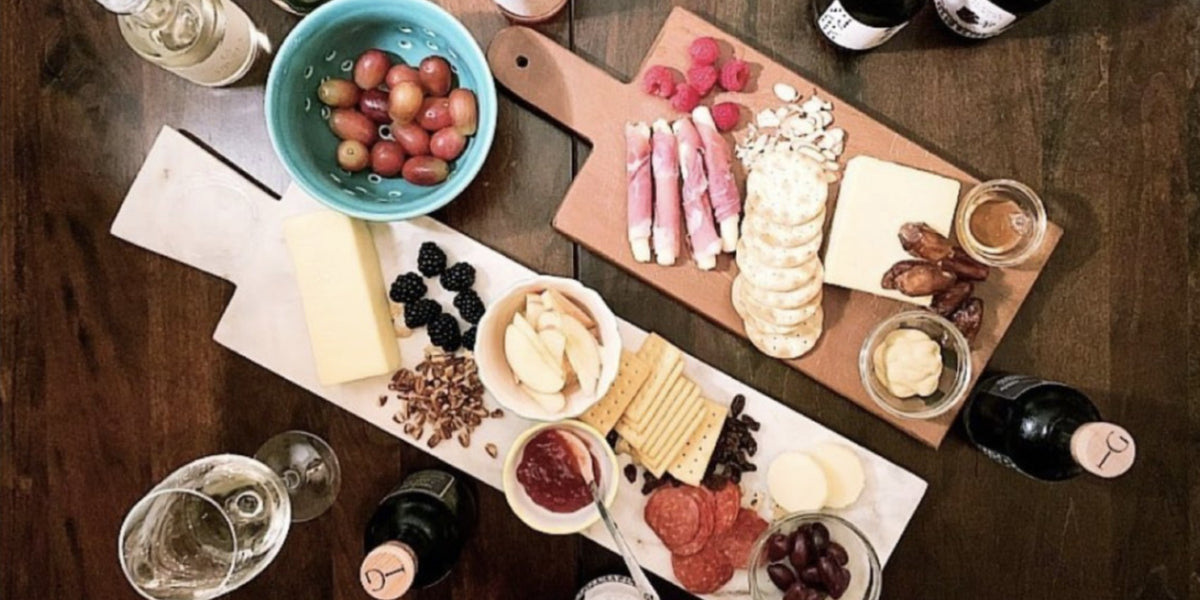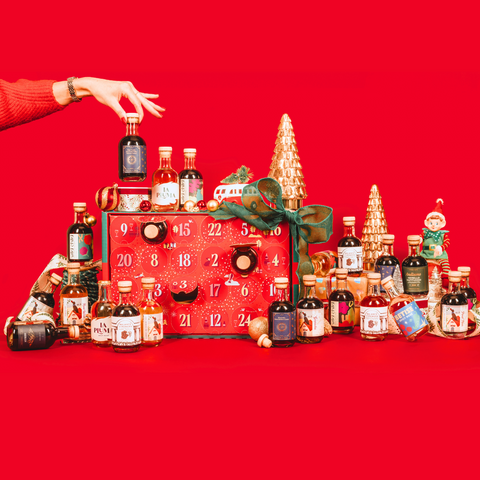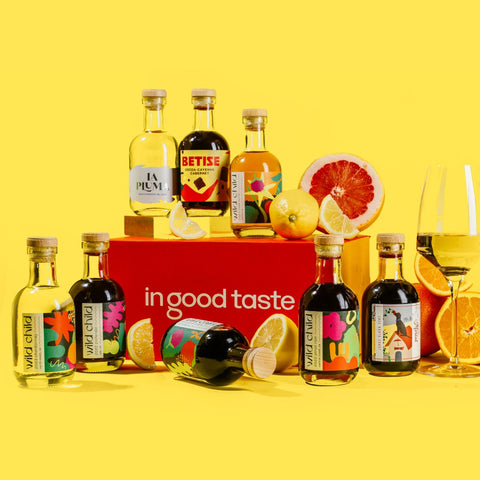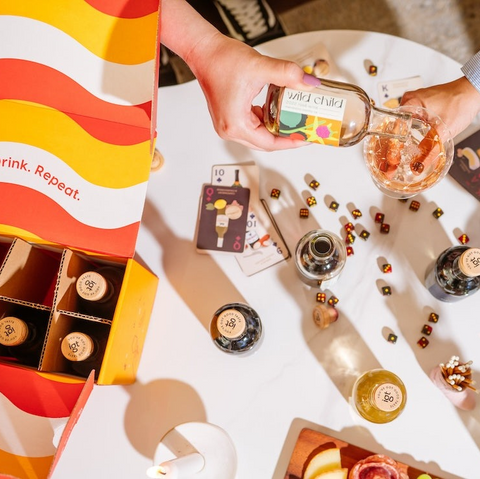Getting Skilled in Sips and Snacks
From deli salami to artisanal aged hams, the ultimate charcuterie board is a colorful array of cured and preserved meats. The French word charcuterie (pronounced "shahr-ku-tuh-ree") literally translates to “cooked flesh,” particularly pork. In this technique, first created by the Romans, then adopted by the French, butchers or charcutiers would make sausage, pates, and other forcemeats to preserve fresh cuts before the age of refrigeration and even to use up the less savory cuts typically reserved for those of the lower-status peasantry.
These days, charcuterie has evolved past practicality into an art form widely embraced by social media, and you can see millions of beautifully arranged boards with one simple search. The traditionally cured forcemeats now sit alongside gourmet cheeses, surrounded by tiny jars of jams and pickles, and covered with crackers, fruits, and vegetables.
So, how can you build the ultimate cheese and charcuterie board for yourself?
Creating the best charcuterie board means looking at all of the components, from the meats, cheeses, and spreads to the complimentary wine selection. You need to find the perfect balance between salty and sweet, crisp and savory, acidic and umami. Presentation is key to making the charcuterie board a party centerpiece. All of these components are explored below, and, as a bonus, we will also look at how to theme your charcuterie board to make it stand out and taste delicious.
Building Your Charcuterie Board
The ultimate charcuterie board should first be consumed by the eyes. The bountiful charcuterie boards of social media all have a few things in common: they contain elements of variety, contrast, and texture. To build a board like the pros, you need all three of these components on your charcuterie board.

Variety ensures that your board includes a little something for every palette. This applies not only to the main meat and cheese components but to your wine choice as well. You cannot create the ultimate board without a decent selection of food and wine.
Contrast is essential for balance. Complementary flavors entice the palate. Your accompaniments play a key role in creating contrast. For example, the bright acidity of a cornichon cuts straight through the salty, fattiness of prosciutto.
Texture may not seem significant, but a lot of textural food pairings are classic for a reason. Humans love a well-composed bite of food. Too many soft and gooey cheeses, or an abundance of sliced meats with nothing to spread, could result in a boring presentation and one-note flavor.
Now, keeping in mind these three components, here are a few popular charcuterie board items.

Sliced Meats
Sliced meats, such as salami, prosciutto, cured ham, mortadella, soppressata, and pepperoni, are a crucial part of a charcuterie board. They are the finger food portion of your board and can be wrapped around a piece of cheese or paired with an apple for contrast.
Spreadable Meats
If you are looking to upgrade your board and impress your guests, try adding some spreadable pates or rillettes, like chicken liver pate, foie gras, rillettes, creton, and 'nduja. Serving spreadable meat allows your guests to experiment with stacking and encourages people to peruse your selection of crackers and toppings.
Cheese
The idea that a charcuterie board has to include cheese is a common misconception, but who doesn’t love this classic combination? Cheese and meat go together naturally on a charcuterie board. One hard (gouda, cheddar, gruyere), one soft (brie, triple creme), and one funky (blue, goat) is a simple place to start.
Palate cleanser
Fruit and vegetables make great palate cleansers. They also give your gluten-free and vegetarian guests something to eat. Choose your favorites or go for the classics, including cornichons (mini pickles), grapes, apples, and cucumbers.
Toppings
Mustard, jelly, tapenade, pesto, hummus, bacon jam. Toppings can amp up the variety of flavor combinations and set the theme for your whole board. They can also provide a clue for which wines you should be pairing with your board (more about that a little later).
The Vehicle
Not to be underestimated, the vessel on which we consume our selections can make or break a charcuterie board. I don’t know if you’ve been down the cracker aisle lately, but there is something for everyone. Thick, cookie-like crackers sit next to crispy rosemary wafers, while wasabi rice crackers perch opposite multi-seed gluten-free crackers...Choose one to go with everything or a couple for people to mix and match.
Remember, variety, contrast, and texture each play a part in the ultimate charcuterie board. Now that you know the players, let’s take a look at how they work all together.

Ultimate Charcuterie Board Ideas
If you are struggling to decide what you want on your board, try starting with a theme. Theming your charcuterie board will help you cut through the options to create a seamless presentation. You can do this by choosing the contents of your board based on a certain country, event, or holiday. You can focus on local products or only buy what is seasonal. The choice is yours.
Theming with Terroir
The concept of terroir, or the environment that affects the overall flavor and character of a wine, can apply to more than your beverage selection. Often, the wine from a country will pair best with foods from that same country. The subtle art of wine tasting is a skill that can be developed with practice. And who doesn’t want to practice such a delicious hobby?
For example, Spanish cheeses, such as Manchego and Queso Cabrales (a creamy Goat Cheese), pair well with Spanish Jamon Iberico, cured ham, or salami. For decoration, add potato chips, olives, Marcona almonds, grapes, and a sweet quince paste. A wine made with tempranillo grapes would stand up to smoky, salty meats and cheeses while complimenting the sweet quince and grapes.
Eating with the Seasons
Building a seasonal charcuterie is another easy way to theme your board. The freshest foods always provide the most flavor. We’ve all had the experience of eating a strawberry mid-winter and wondering what happened to that bright sweetness that we remember from spring.
A spring-themed board could celebrate all things bright and fresh. Sugar snap peas, pickled fiddleheads, and strawberries would pair well with creamy Brie, chicken liver pate, and prosciutto-wrapped asparagus. To drink, focus on acidic white wines, such as a Sauvignon Blanc, to complement the flavor profile.
If you are interested in supporting local producers, try theming your board around what is available close to you. Skip right over the imported cheese sections, and explore your local terroir while helping your neighbors.
Many of us already instinctually theme our meals, pairing tomato sauce with pasta or pumpkin with warming winter spices. Choosing a holiday to inspire your board could result in an interesting composition, and we all know how well wine pairs with family gatherings. The trick is to get creative and experiment with the flavors and foods you like the best. The look of your board depends on variety, contrast, and texture, but you still have to eat everything once it’s been presented!
A Feast for the Eyes
Channel your inner decorator when bringing the pieces together on your charcuterie board. If you don’t have a designated board for cheese and meat, do not despair. The humble cutting board is easily transformed when covered with your selections.
As you build your board, start with the largest components, and work your way down to the smallest. This will ensure that you have space for the stars of the show (i.e. meats and cheeses). Next, come the crackers and condiments. Finally, use the smallest components as decoration, sprinkling a few almonds across the board or strategically placing bundles of grapes for contrasting color and flavor.
Wine Pairing with Your Ultimate Charcuterie Board
A social gathering that includes a charcuterie board would not be complete without a selection of wines. Wine pairing with a charcuterie board is not as hard as you might think. Most food and wine pairings are relatively self-explanatory once you know the basics.
When pairing wines with a charcuterie board, you probably want a wine that will balance the fatty, rich, saltiness of the meats and cheeses. Choosing a wine will depend on your palate taste. Wine tasting is a fun way to get to know your preferences. Even if you can’t meet with friends in person, virtual tastings can be a fun way to learn about wine while socializing at the same time!
If you decided to theme your board, you can use your theme to help you choose your wines. Usually, foods that were grown and made in the same region taste well together. To continue with our example from above, a Spanish Tempranillo with notes of fig, cedar, and cocoa will pair well with the smoky richness of a cured Spanish ham. The meats on your board will most likely pair better with medium- to full-bodied reds, while the cheeses will often pair better with white, rosé, or bubbles.
Here are a few tips to further match your wine to your charcuterie board.

Dry White Wines pair well with the freshness of the cut vegetables that accompany the meats and cheeses on your board. A dry Riesling or Sauvignon Blanc would be a great place to start.
Sweet and Rich White Wines are refreshing to the palate and will cut through anything fatty. If your board has cheese, you should have at least one white to pair with it. Viognier, Chardonnay, and Rosé have the fruitiness and body that cheeses crave.
Medium and Bold Reds pair well with meat, whether it's fresh or cured. The older the meat, the more flavor you need to match it. Consider the kind of red that warms you up on a cold evening, with flavors that stand up to a lot of salt and fat. Pinot Noir, Mourvedre, Tempranillo, Cabernet Sauvignon, Syrah, and Sangiovese are a few reds that will stand up to the meat selection on your charcuterie board.
A Note About Cheese and Wine:
Many classic wine and cheese pairings date back years. Most wine enthusiasts will tell you that full-bodied wines with robust flavors and tannins pair better with strongly-flavored cheeses, while lighter wines pair better with more moderate cheeses. The adage "buy on an apple and sell on cheese" advises that if a wine tastes good on a sweet and tart apple, it will probably taste good with cheese. Experiment for yourself to see what you think!
--
A wine party with a pre-selected wine flight would be the perfect place for a charcuterie board. If the event calls for a charcuterie board, you can probably assume that multiple bottles of wine will be consumed. If you decide to do a tasting party, follow the classic wine tasting rule of starting with bubbles, moving to white or rosé, and finishing with red.
When it comes to food pairing, it can be tempting to follow the rules. Your server recommends a wine for a reason (and no, that reason is not always because it is the most expensive bottle on the menu). Wine enthusiasts will be the first to tell you that just because wine has a classic pairing, that does not mean it will always pair well with that type of food. A Cabernet from California will be significantly different from a French Cabernet. So, when push comes to shove, go with your gut. If you still feel overwhelmed, look for a wine pairing chart online, or educate yourself about general wine facts.
No meal has ever been ruined by a bad wine pairing, so don’t let fear stop you from enjoying your bottle. The best part of a charcuterie board is that it is meant to be shared among friends. Experiment, taste test, and explore; your party guests will thank you. Good luck, and happy pairing!
Endless Possibilities
Their humble beginnings notwithstanding, the ultimate charcuterie has something for everyone. More important than the contents of your board are the memories created with friends and family. Whether your gathering has 20 people or two, the ultimate charcuterie board is a treat for all.
If you take away one thing from how to build the ultimate charcuterie board, let it be that the possibilities are endless. Don’t be intimidated; be curious and fearless. Pair that weird stinky cheese with your local supermarket pate, and see what happens. Go unorthodox, and try drinking white, then red, then bubbles, and pair each with a different part of your charcuterie board. You never know when you will find the perfect bite.










